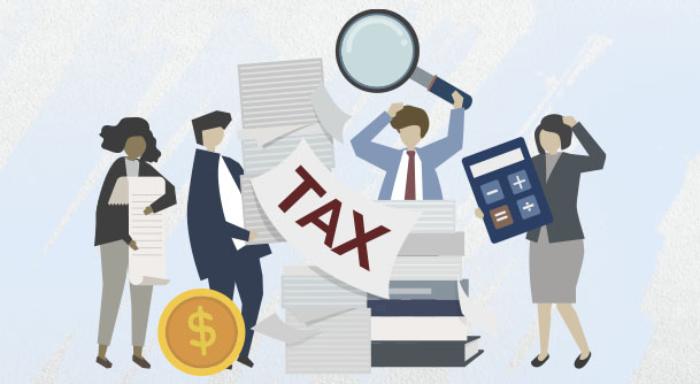What is ITR-U Form & How to File ITR-U
Blog Title
3934 |
5/9/25 1:25 PM |
Filing Income Tax Returns (ITR) is an important responsibility held by every Indian taxpayer. However, sometimes you may forget to add certain details or make errors while filing your income tax returns. To address this issue, the Government of India introduced the ITR-U form. This form allows you to update your tax return submissions to fix any mistakes you might have made.
ITR-U enables taxpayers to disclose missed income from an investment plan or correct errors they might have made while filing taxes. Correcting your errors using the ITR-U form allows you to rectify your tax filings without facing any legal consequences. Let’s understand how you can use ITR-U to avoid penalties and comply with the tax laws.
What is the ITR-U Form?
ITR-U (Updated Income Tax Return) is a form that was introduced under Section 139(8A) of the Income Tax Act. It is a form that taxpayers can use to rectify mistakes or include information that they might have missed in their previously filed returns.
ITR-U helps you to correct any income that you might have missed reporting, a deduction that has been claimed incorrectly, or any similar error in your original return. This form gives you the ultimate second chance to guarantee that all the financial information provided has been correctly reported to the tax authority.
You can also use ITR-U to update your filing if you forgot to report income from a Unit Linked Insurance Plan (ULIP). ITR-U can be filed within 24 months from the end of the relevant assessment year but requires an additional tax payment (25% or 50% of the due tax).
Common Scenarios for Filing ITR-U
Missed Income: If you have not included any additional income source like- interest from saving accounts or gains from ULIP Investment, ITR-U helps you to update your return to avoid penalties.
Incorrect Deductions: You can use ITR-U to rectify deductions that were filed incorrectly. For example, if you claim deductions on expenses that are not allowed, you can use ITR-U to undo your previous claims. By doing so, it guarantees your tax return is in line with the tax laws and helps you avoid any unneeded tax problems.
Incorrect Tax Paid: If you have paid less tax than required, updating your return ensures compliance with tax laws. ITR-U can be filed to correct underpaid taxes and minimize additional penalties.
Wrong Tax Calculation: if you made mistakes while calculating your tax liability, you can use ITR-U to officially readjust your taxes. This prevents complications down the road by ensuring that you are reporting accurate numbers to the tax authorities.
How to File ITR-U?
Taxpayers can easily file ITR-U online using the Income Tax e-filing portal. Here’s a step-by-step guide:
1. Login to the Income Tax Portal:
Visit the Income Tax Department’s official website and log in with your PAN and password. Make sure that all credentials are correct to access the portal without any issues. This step is required to validate the process of updating your tax return.
2. Select the ‘ITR-U’ Form:
Under the 'File Income Tax Return' window, select ITR-U as your return type.
3. Provide the Necessary Details:
Enter the details of the original ITR filed, such as the assessment year and acknowledgement number. Your updated return must clearly document any changes made, such as omitted income or incorrectly claimed deductions.
4. Update the Income and Tax Details:
Make sure to correct any source of income that may have been skipped and check all deductions. Recalculate your tax liabilities, including applicable tax benefits, to ensure your updated returns comply with tax laws.
5. Pay Additional Tax (If Required):
If the updated return results in additional tax liability, the tax should be paid before filing ITR-U. Doing so will save you from penalties that may have been incurred later down the line.
6. Submit the Updated Return:
Review all details then submit the updated return. You will get a printout of the acknowledgment for your reference. This step confirms that your corrections have been accepted and documented by the tax authorities.
Time Limit for Filing ITR-U
Taxpayers can file ITR-U within 24 months from the end of the relevant assessment year. This provides sufficient time to fix mistakes and update tax details. Say, if you need to revise your return for AY 2022-23, the deadline to file ITR-U is on March 31, 2025.
Therefore, ITR-U can be used to report unreported income, such as income from a saving insurance plan.
Financial & Assessment Year |
Last Date to File ITR-U |
FY 20-21 (AY 2021-22) |
31st March 2024 |
FY 21-22 (AY 2022-23) |
31st March 2025 |
FY 22-23 (AY 2023-24) |
31st March 2026 |
FY 23-24 (AY 2024-25) |
31st March 2027 |
Penalties and Additional Tax on Filing ITR-U
Filing an updated return comes with additional costs. When the correction is done, the government levies further penalties and additional tax payments.
If you file ITR-U within 12 months, you must pay 25% additional tax on the due amount.
If you file ITR-U after 12 months but within 24 months, the penalty increases to 50% of the additional tax due.
For example- if you underreported the income from an endowment life insurance plan and you owed ₹10,000 in tax, you will need to pay ₹12,500 if you update the return within 12 months. If filed after 12 months but before the 24-month deadline, you will have to pay taxes of ₹15,000 instead.
Takeaway
Filing taxes correctly is important, but mistakes may happen. The option to update tax returns helps taxpayers fix errors and stay compliant with tax laws. If you forgot to report your income, deductions, or tax benefits, updating your return with the help of ITR-U ensures that your details are accurate. Correcting your returns using ITR-U will also protect your from any penalties that may have been incurred in the future.
Staying informed about tax rules and available tax benefits will help you avoid making mistakes during tax filing. And even if you do make mistakes, it is wise to rectify them as soon as possible to remain tax compliant and maintain financial transparency.










